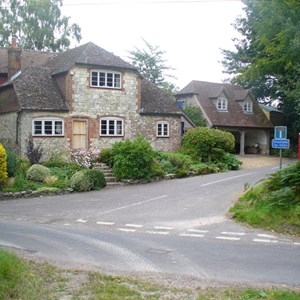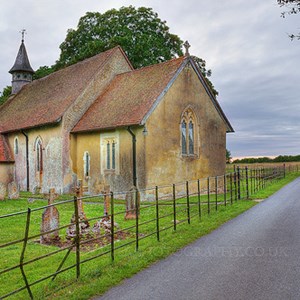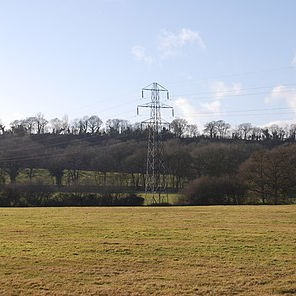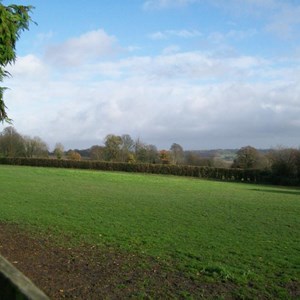West Worldham
Situated two miles south of Alton, West Worldham comprises some eighteen houses with a population of approximately fifty people. Lying between the Selborne Road and the Bordon Road from Alton. It is a relatively peaceful place surrounded by farmland and a delightful place to live.
Next to the handsome Manor Farm House is the small church of St Nicholas where regular services are held. St Nicholas is one of the eleven churches in the Northanger benefice.
Many of the houses were originally farm cottages or farm buildings now converted to dwellings for workers in a wide variety of occupations, few connected to agriculture. Most construction is of brick although some of the older houses are of brick and Selborne stone. The only new buildings are on the site of and to replace two old houses and have been designed to fit well into the landscape.
The population spans all ages from two weeks to late eighties and although there is little organised community activity, the community has a friendly atmosphere and much socialising especially among the young families. The annual St Nicholas Party remains a popular gathering for all residents and their friends despite a changing population.
The central point of the hamlet is Manor Farm standing as at the cross roads in the centre. The farm produces the usual grain crops and has a flock of sheep and beef cattle. A recent diversification has seen the introduction of luxury camping facilities, Featherdown Farm, and these are proving very popular with young families and walkers. There are many foot paths around the village and wider area. It is delightful place to live.
Brief History
West / Little Worldham is thought to have originally been part of the ‘Werildeham’ of Domesday. The first mention of West Worldham found so far is in a document of October 1277.
At the end of the 12th century, Richard de Annecy granted the church of St Nicholas of Worldeham to Hamble Priory and the name of Hamble Pits Woods, which are to the NW of the church off Water Lane, are a reminder of this association. The church is still a simple cell building which fell into great disrepair before undergoing very considerable restoration in the late Victorian period. The parishioners went to Hartley Mauditt Church while the work was being carried out.
The village originally lay on the direct route south from Alton which went up Windmill Hill and along Water Lane. The opening of the road ( now the B3006 ) between Alton and Selborne past Hartley Mauditt and Norton Farms in the mid-1800s meant that the traffic by-passes the village. There was no school in the parish and the children attended one in Hartley Mauditt
West Worldham remains a small hamlet clustered around the two old farmhouses of Pullens and Manor House Farm [both Grade 2 listed] and has grown little since the record in 1428 that there ‘were not ten domicilia tenantes’. Pullens has an inscription of 1652 but has late medieval features of a hall house. The associated malmstone barns are now dwellings. Manor Farm House, thought to be built on medieval foundations, is a handsome 18th century property with a range of traditional farm buildings, farmyard and several cottages. Mauditt.
In May 1944 the hamlet narrowly missed damage when a Junkers JU188 under heavy anti- aircraft fire and attack by a Mosquito. It broke up over West Worldham and the wreckage was spread over a wide area with one piece landing against the church wall. The residents were evacuated while a second bomb, which had fallen in the field opposite Manor Farm, was defused and dug out by a team from the Royal Engineers. The mosquito came down in flames near Whitehouse Farm on the Selborne Road. Both pilots and the german radio operator survived.



